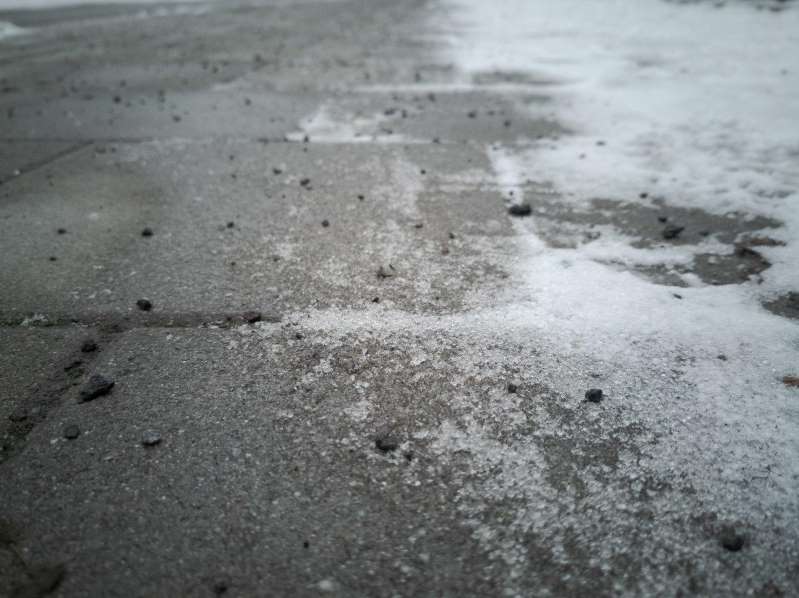Road salt ensures safe roads. However, it is a burden for the environment. And the house facades suffer as well.

If you are on the streets and sidewalks of the city these days, they cannot be overlooked: the white edges that come from the sodium chloride. To put it more simply: from the road salt.
environmental Protection
A topic where road safety and environmental protection collide every year. And it doesn't look like the problem (or the salt) is going to evaporate that easily. In Vienna there is actually a salt litter ban. However, this can be “overridden by the Waste Management, Street Cleaning and Vehicle Fleet Department (MA 48) in accordance with the 2003 Winter Service Ordinance under appropriate weather conditions.” The MA48 gritters are always deployed when the temperatures drop towards zero or even below.
Motorways and expressways
The motorways and expressways are in turn managed by Asfinag. According to the manager of their motorway operations, Heimo Maier-Farkas, around 80,000 tons of salt are distributed every year on the 2200 kilometers of motorway and expressway network in Austria. “We sprinkle pure evaporated salt, the same salt that is used for food, only uniodinated. With preventive scattering (before it freezes or snows), the salt is mixed with water, which is called brine. “
Salt and water mixture
This salt-water mixture has two advantages: it sticks to the road for a long time and you have to spread less salt overall. Of course, it still remains harmful. Roman Türk is a former professor of ecology at the University of Salzburg. He confirms: “If too much road salt is used, the trees die. The plants turn yellow in summer. And the soil is also heavily compacted. The soils can no longer be aerated due to the high amount of salt. “
House facades
One issue of conflict is the application of salt in facility management. The road salt used can also damage house facades. Simon-Boris Fink, head of the Simacek housekeeping department, explains: “Road salt combines with the water and thus forms a solution that can damage the pedestals (especially those made of sandstone or marble) and facades. If the masonry is already damaged, this can lead to the decomposition of the bricks. Snow pushed together along the facade can also cause moisture damage. If there is also salt in play, the damage increases. The sodium chloride solution often leads to corrosion damage on steel stairs or grilles. ”The scattered salt not only causes problems for the building facades, the interiors also suffer. We carry the salt into the buildings through our shoes, which come into contact with the salty ground.
Dirt control mats
Fink therefore recommends “placing dirt control mats in the entrance area. This is where the coarse dirt from the shoes (salt or grit) is “caught”. These mats should be cleaned or replaced at regular intervals. ”When asked about sustainable alternatives, Fink explains:“ There are “eco-grit” such as natural pumice granules from various suppliers – but these are associated with higher costs, which are then over the operating costs are charged to the tenants and apartment owners. “

